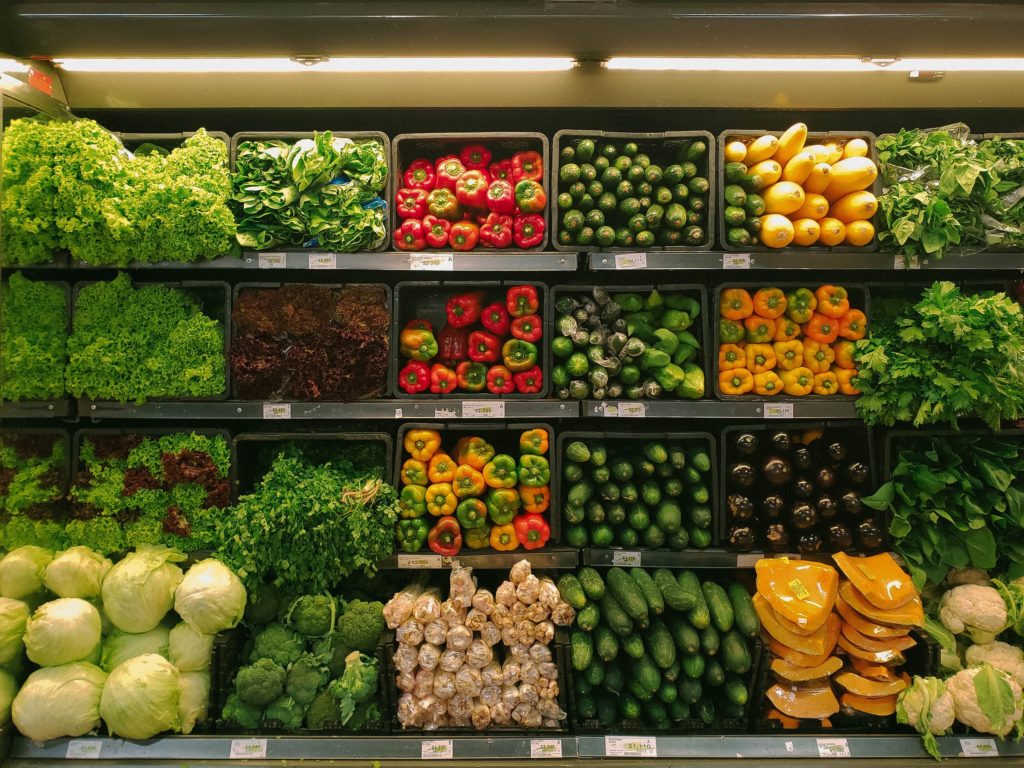
My top 5 grocery store tips in the time of COVID
Many of you have asked, so I wanted to share my top five tips for grocery shopping during COVID. Let’s jump in!
- PLANNING IS A MUST
Trust me, I am NOT a fan of planning. I really wish I could get through life without ever having to plan anything. What I continue to find out over and over again, however, is that planning can make a lot of things a little easier to accomplish… and grocery shopping during COVID is one of those times. If you want to keep your visit quick and buy things that won’t go bad in your fridge, you’ve got to plan ahead.
When you’re planning for grocery shopping, there are a few basic places to start. First, you’ll want to find recipes or think of meals you could see yourself eating for the next couple of weeks. Find new recipes to try and utilize recipes you know and love, including the simple ones like grilled cheese and soup, a spaghetti dinner, or even just turkey sandwiches. Secondly, you’ll want to take the time to look through your kitchen and see which items you need for the week that you already have, and take note of the items you’ll need to pick up on your grocery trip.
Which leads me into number three… MAKE THE LIST. Even if you think you only need a few things, you’ll be happy to have a list instead of forgetting one crucial ingredient or toiletry while you’re there the first time. You can also keep a running list between grocery visits. A good way to do this is by keeping a small whiteboard on your fridge so you can write down the things you need when you think of them throughout the week!
- DON’T BE AFRAID OF CONVENIENCE AND PROCESSED FOODS
Remember when we were all told to only shop the perimeter of the grocery store for a healthier grocery haul? Because it’s “healthier” if you know every single ingredient in your meals and you should make everything from scratch 100% of the time to be “healthy”?
Now is definitely not the time to listen to that bad advice. Actually, you can go ahead and just throw out all that bad advice for good… no thanks diet culture. The majority of foods at the grocery store are processed in some form or another, including the produce. Don’t be afraid of the word processed or to take advantage of convenience foods. You don’t have to cook everything from ~the freshest ingredients~ to live a healthy lifestyle!
The center of the grocery store can be your favorite place during quarantine. Frozen and shelf-stable foods are an excellent addition to the kitchen right now because of their longer lifespan. You can also get a huge variety of both super nutritious and fun foods in the center isles. Things like tuna, canned and dried beans, frozen fruits and veggies, box or pre-packaged dinners, noodles, rice and other grains, peanut butter, soup, frozen meals, ice cream, brownie mix, and all of the snack foods are found in the center isles! There are plenty more options there that I haven’t listed, and since all foods are neutral, they can all be a part of your normal eating pattern! Base your purchases off of what you like and will actually eat, which is a point I’ll talk about more later.

- BUY TO PREP FOR MEALS INSTEAD OF MEAL PREP
One tip I always bring up when talking about meal prepping and planning is buying food to prep for meals instead of meal prep. This means instead of meal prepping the same chicken/rice/veggie meal for multiple days of the week, you prep the items and store individually. From there, you can use or reheat the items as you need them depending on what sounds good each day.
I like to keep cooked chicken breast, cooked rice, and chopped up fruits & veggies in the fridge to make it easier to make meals throughout the week. This way, I like that I don’t have to eat the exact same thing every day and can still have plenty of variety in my meals with less work! I often combine the foods that I’ve prepped with some of the packaged foods or meals that I’ve also purchased. This allows me to have a complete, filling meal with much less work each time.
For example, if I have prepped chicken breast, rice, diced onion, and chopped bell peppers, I could easily throw the onion and peppers on a skillet and create a mexican-style rice bowl with canned & rinsed black beans, avocado, sour cream, and salsa for dinner. I can put away the leftover beans to be used as a protein source throughout the week now as well. The next morning, I could throw the veggies into a cheesy omelet or veggie scramble with eggs and potatoes. I could also easily make a stir fried rice meal with my pre-cooked rice, a frozen veggie blend, and frozen cooked shrimp. Maybe later in the week I could make a bean burrito with my leftover black beans!
The choices are endless, but it does take some experimenting and learning how to throw food together without a recipe. Remember, you can always google “recipes using (your ingredients here)”, and getting to a point where you feel comfortable to throw things together without any recipe may take a lot of practice! At a certain point, it really is best to just give it a go and see what happens. You may just come up with a new favorite recipe!
- BE REALISTIC ABOUT WHAT YOU WANT TO EAT AND WHAT YOU NEED TO BUY
This is probably my favorite tip of the bunch.
I talk to a lot of people who want to reduce their food waste, eat a healthy diet, and watch their food budget, especially these days. Being honest with yourself about what types of foods you will actually eat at home and what days of the week you’d prefer to get takeout is a great place to start.
If you find yourself frequently letting your produce go bad because you just end up going out instead of making the full week of healthy meals you’ve promised yourself you’d make this time… this tip is for you. I’m guessing you see the produce, lean meats, and grains you buy at the store as “healthy” or “good” food and the takeout as “unhealthy” or “bad” food. You fill your cart with all the “right” foods, but find yourself wishing for nothing more than a takeout burger meal from your favorite local restaurant. Or maybe just McDonald’s!
The thing is, takeout can be a part of a healthy diet pattern. The healthiest thing you can do for yourself is to acknowledge that you like to eat out sometimes, give yourself permission to do so, and plan ahead so that you don’t waste food and money because you were trying to “prove” you are healthy by buying a bunch of produce you won’t use.
Another important part of this tip is that you buy yourself the things you like to eat when grocery shopping. Choose fruits and vegetables you will actually eat and know how to cook. Buy yourself the fun foods you like so that you don’t end up stuck at home with no fun food to satisfy your cravings. This might include things like frozen pizza, ice cream, mozzarella sticks, snack foods, or other foods you may have previously not allowed yourself to bring home. Instead of denying yourself the food you actually want, just get it while you’re at the store so you don’t have to go out and buy takeout later in the week when you inevitably fold to your normal cravings. Unconditional permission to eat is really helpful here.
Oh, and while you’re at it, please don’t feel guilty for liking the fun foods. They’re good, and you’re allowed to enjoy them! Working on a healthy relationship with food is just as important as any choice you make at the grocery store if you’re wanting to live a healthy lifestyle. Learn more about how intuitive eaters are creating lasting healthy habits here.

- WEAR A MASK, WASH YOUR HANDS, AND SOCIAL DISTANCE WHENEVER POSSIBLE WHEN YOU GO OUT.
And don’t forget to tip the people making and delivering your takeout. And tip them well!!!!
One final note: if you are craving more nutritious foods, don’t feel bad about that, either! You can eat whatever you LIKE that makes you FEEL GOOD. Even if it’s a recipe you learned from your dieting days. The difference I’m looking for is that you actually want to eat the food, you aren’t forcing yourself to eat something nutritious because you feel like you have to.
I hope you found this article helpful! I’d love to hear your feedback in the comments below.
If you’re interested in learning more about why dieting doesn’t work and how to re-evaluate your current definition of health, CLICK HERE to take my free training. And if you’d like to learn more about working with me, stick around until the end of the training to schedule your free 45-minute discovery call where we can get to know each other and see if we could be a good fit to work together!
— Lauren